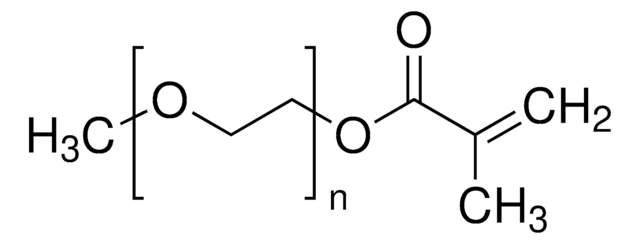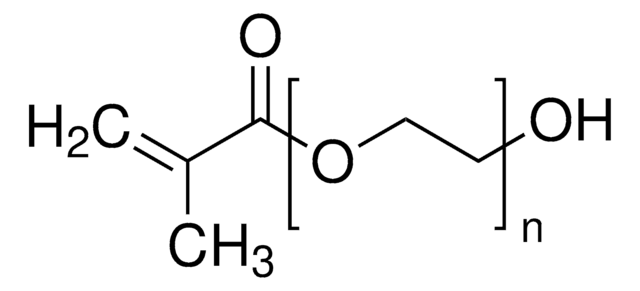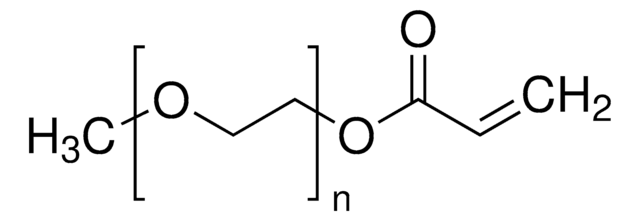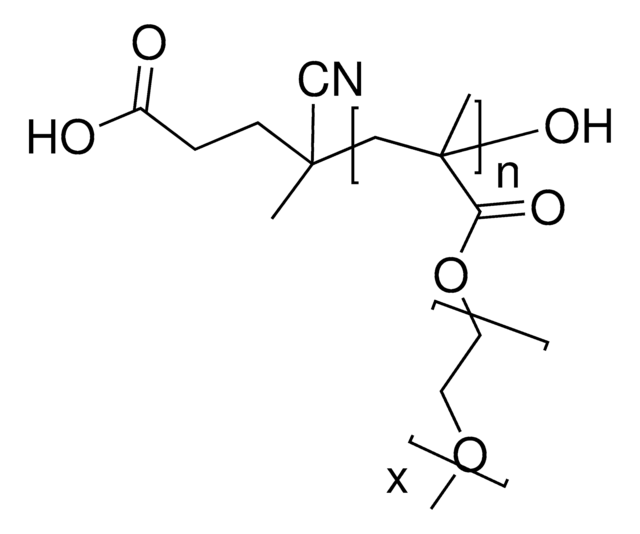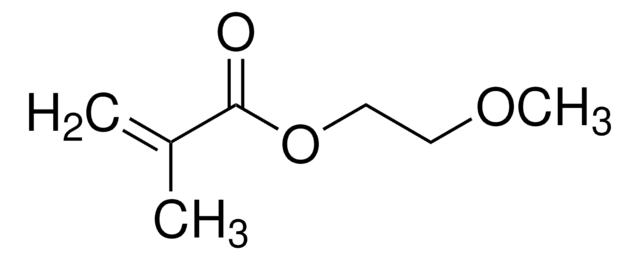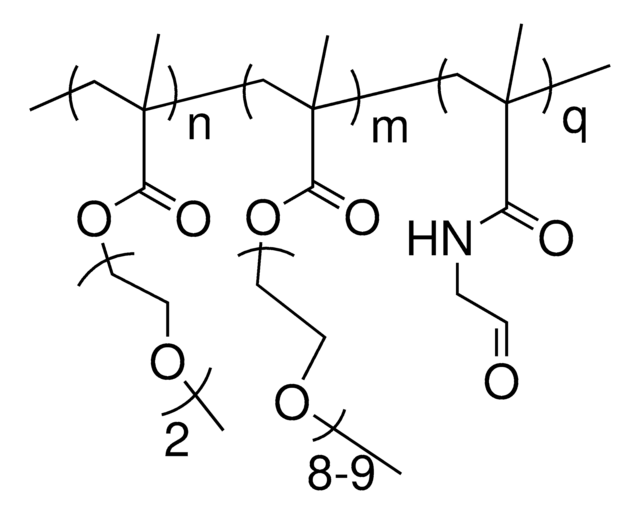Kluczowe dokumenty
447935
Poly(ethylene glycol) methyl ether methacrylate
average Mn 300, methacrylate, methoxy, 300 ppm BHT as inhibitor, 100 ppm MEHQ as inhibitor
Synonim(y):
Glikol polietylenowy
About This Item
Polecane produkty
Nazwa produktu
Poly(ethylene glycol) methyl ether methacrylate, average Mn 300, contains 300 ppm BHT as inhibitor, 100 ppm MEHQ as inhibitor
masa cząsteczkowa
average Mn 300
Poziom jakości
zawiera
100 ppm MEHQ as inhibitor
300 ppm BHT as inhibitor
przydatność reakcji
reagent type: chemical modification reagent
reaction type: Polymerization Reactions
współczynnik refrakcji
n20/D 1.452
gęstość
1.05 g/mL at 25 °C
Ω-koniec
methacrylate
α-koniec
methoxy
architektura polimerowa
shape: linear
functionality: monofunctional
temp. przechowywania
2-8°C
ciąg SMILES
O(CCOCCOC)CCOCCOC(=O)C(=C)C
InChI
1S/C13H24O6/c1-12(2)13(14)19-11-10-18-9-8-17-7-6-16-5-4-15-3/h1,4-11H2,2-3H3
Klucz InChI
KRCGBOKYIUDIFY-UHFFFAOYSA-N
Szukasz podobnych produktów? Odwiedź Przewodnik dotyczący porównywania produktów
Powiązane kategorie
Opis ogólny
Zastosowanie
Hasło ostrzegawcze
Warning
Zwroty wskazujące rodzaj zagrożenia
Zwroty wskazujące środki ostrożności
Klasyfikacja zagrożeń
Eye Irrit. 2 - Skin Irrit. 2 - Skin Sens. 1 - STOT SE 3
Organy docelowe
Respiratory system
Kod klasy składowania
10 - Combustible liquids
Klasa zagrożenia wodnego (WGK)
WGK 1
Temperatura zapłonu (°F)
Not applicable
Temperatura zapłonu (°C)
Not applicable
Środki ochrony indywidualnej
dust mask type N95 (US), Eyeshields, Faceshields, Gloves
Wybierz jedną z najnowszych wersji:
Masz już ten produkt?
Dokumenty związane z niedawno zakupionymi produktami zostały zamieszczone w Bibliotece dokumentów.
Klienci oglądali również te produkty
Produkty
The manufacture of monomers for use in ophthalmic applications is driven by the need for higher purity, improved reliability of manufacturing supply, but ultimately by the need for the increased comfort, convenience, and safety of contact lens wearers. Daily wear contact lenses have the potential to fill this need for many customers; however, their widespread use is constrained by higher costs compared to weekly- or monthly-based lenses. New approaches that improve cost structure and result in higher quality raw materials are needed to help make contact lenses more affordable and accelerate growth of the contact lens market.
Devising biomaterial scaffolds that are capable of recapitulating critical aspects of the complex extracellular nature of living tissues in a threedimensional (3D) fashion is a challenging requirement in the field of tissue engineering and regenerative medicine.
Global Trade Item Number
| SKU | GTIN |
|---|---|
| 447935-500ML | 4061835571611 |
| 447935-100ML | 4061835571604 |
Nasz zespół naukowców ma doświadczenie we wszystkich obszarach badań, w tym w naukach przyrodniczych, materiałoznawstwie, syntezie chemicznej, chromatografii, analityce i wielu innych dziedzinach.
Skontaktuj się z zespołem ds. pomocy technicznej